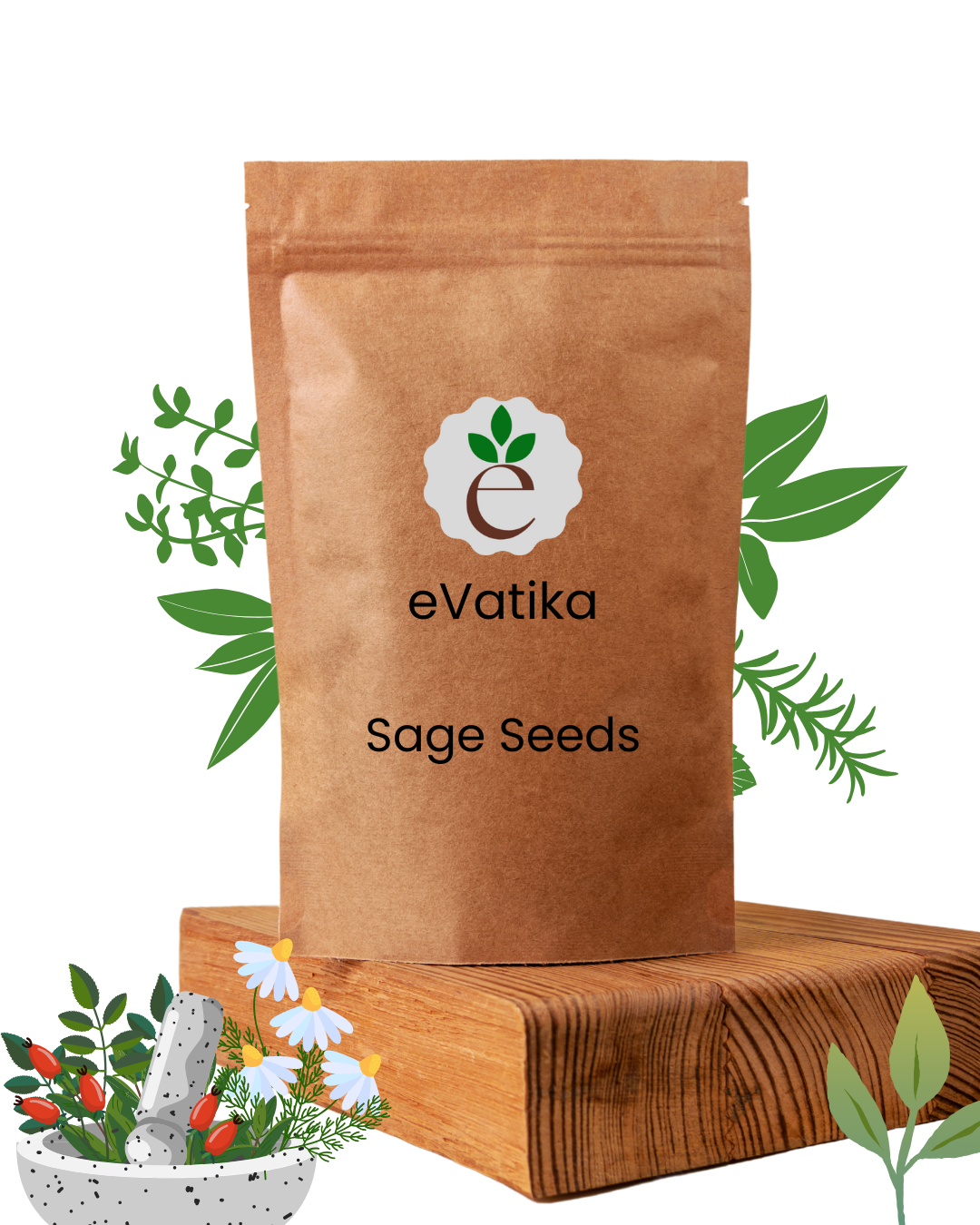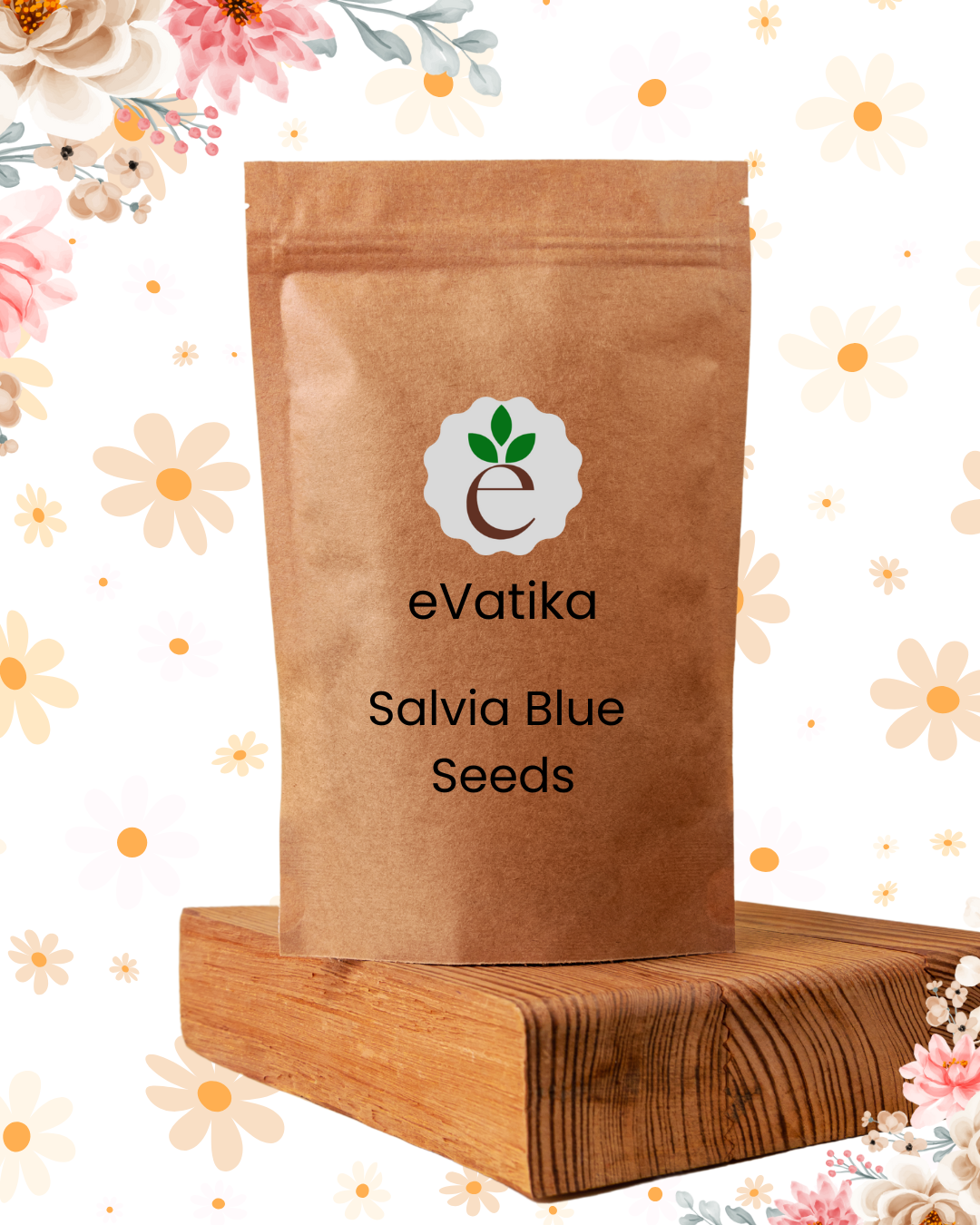Sage Seeds

- Free worldwide shipping on all orders over $100
- Delivers in: 3-7 Working Days Shipping & Return
🌿 How to Grow Sage from Seeds
Common Names:
-
Hindi: सेज पत्ता / सफ़ेद तुलसी
-
Tamil: சேஜ் இலை
-
Telugu: సేజ్ ఆకులు
-
Malayalam: സെജ് ഇലകൾ
-
Kannada: ಸೇಜ್ ಎಲೆಗಳು
-
English: Sage
-
Botanical name: Salvia officinalis
1. Choose the Right Season
-
Warm-season perennial herb
-
Best time to sow:
-
October to March in India
-
Spring in cooler climates
-
-
Ideal temperature: 18°C to 27°C
-
Sensitive to frost in early growth stages
2. Prepare the Soil
-
Soil Type: Well-draining, loamy or sandy soil
-
pH Level: Slightly alkaline to neutral (6.5–7.5)
-
Mix in compost and a little sand for better drainage
-
Avoid soggy, water-retaining soils
3. Sow the Seeds
-
Depth: ¼ inch (0.6 cm) deep
-
Spacing:
-
Garden: 12–18 inches between plants, 18 inches between rows
-
Containers: Use 8–10 inch deep pots, sow 2–3 seeds per pot
-
-
Seeds are slow to germinate — keep moist but not wet
-
Optional: Soak seeds for 4–6 hours to encourage germination
4. Watering
-
Water lightly until germination
-
Once established, water once or twice a week
-
Sage is drought-tolerant — prefers dry conditions
-
Always allow topsoil to dry before watering
5. Germination
-
Germinates in 10–21 days
-
Needs warm temperatures and steady moisture
-
Thin seedlings after 3 weeks, keeping strongest ones
6. Sunlight & Temperature
-
Needs 6–8 hours of full sun daily
-
Thrives in warm, dry climates
-
Protect from frost and excessive humidity
7. Fertilization
-
Fertilize lightly once a month with organic compost
-
Avoid over-fertilizing — reduces essential oil content
-
Sage does best in lean, slightly dry soil
8. Pest Control
-
Common pests: Spider mites, aphids, fungal leaf spots
-
Use neem oil + mild soap spray every 10–15 days if pests appear
-
Prune regularly to improve airflow
-
Avoid overhead watering
9. Harvesting
-
Ready for harvest in 75–90 days
-
Snip leaves as needed — avoid cutting more than ⅓ of plant at once
-
Most flavorful before flowering
-
Harvest in the morning for best aroma
10. Regrow Tip
-
Regrows well after cutting if base stems are intact
-
Can be propagated from softwood stem cuttings
-
Save seeds from dried flower heads for next season
-
Sage is a perennial in mild climates — can live for several years
🥗 Health Benefits of Sage
-
Supports memory and brain function
-
Anti-inflammatory and antimicrobial properties
-
Aids digestion and soothes sore throat
-
Rich in antioxidants, vitamin K, and calcium
Your email address will not be published.


















Reviews
There are no reviews yet.